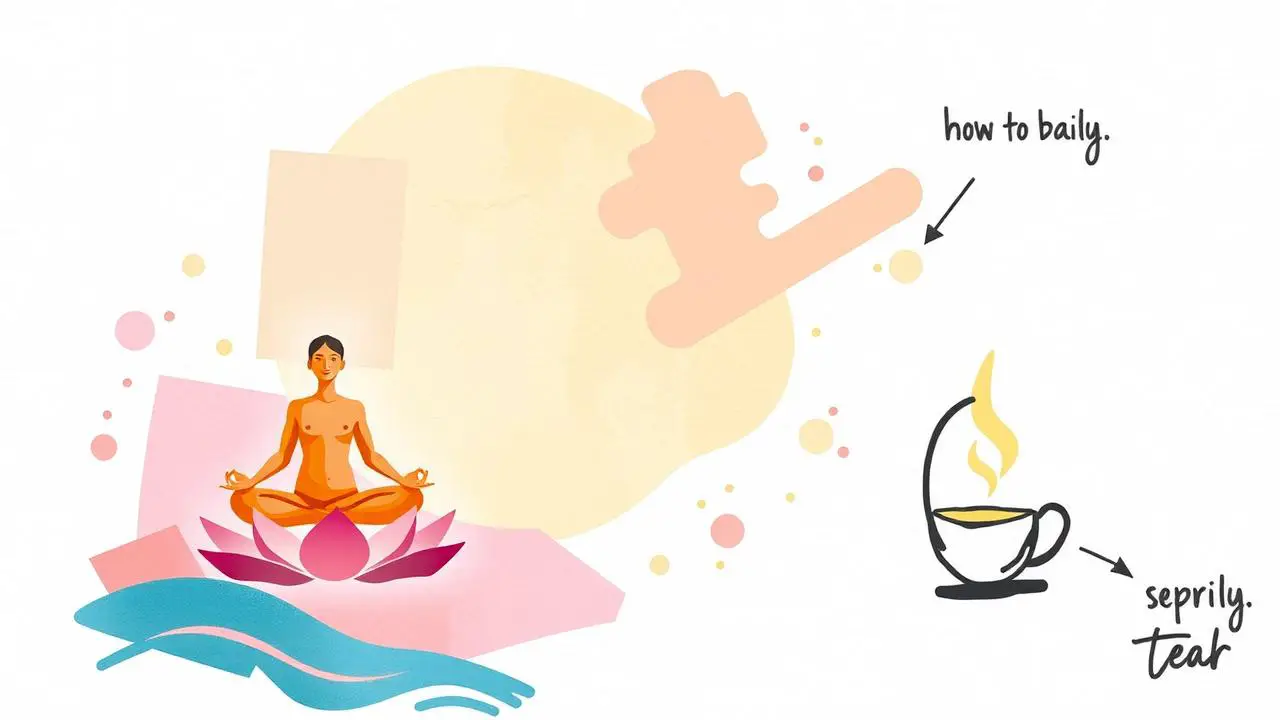Mindfulness is a powerful practice that can help us to stay present in the moment and gain inner peace and clarity.
Counting breaths is one of the simplest ways to get started with mindfulness; it’s easy to do, requires no equipment, and can be done anywhere. How many breaths does it take to calm down?
It can take anywhere from a few deep breaths to several minutes of focused breathing to calm down. The key is to focus on slowing down your breathing and taking deep, purposeful breaths to activate the body’s natural relaxation response.
In this article, I’ll explore why counting breaths is such an effective way to calm the mind and bring greater awareness into our lives.
Counting breaths helps us to focus on our breath rather than our thoughts. By bringing our attention back each time we become distracted, we can learn to be more mindful of our feelings, thoughts and actions.
This simple practice can help us cultivate greater self-awareness, reduce stress levels and ultimately lead us towards a calmer, more balanced life.
What Is Mindfulness?
Mindfulness is a practice of being aware and present in the moment. It involves paying attention to one’s thoughts, feelings, and bodily sensations without judgement or attachment. By focusing on the here and now, we can become more self-aware and gain clarity in our lives.
Through mindfulness techniques such as meditation and mindful eating, we can learn to be mindful of our internal and external environment, allowing us to make conscious decisions that promote well-being.
Counting breaths is an effective way to cultivate mindfulness. It involves quieting the mind through deep breathing exercises that focus on each inhale and exhale. By counting each breath, we bring awareness to our body and help it relax into a state of stillness. In this state of stillness, we create an opportunity for reflection on how we feel emotionally, mentally, and physically.
When practiced regularly, counting breaths can help us become more mindful of our thoughts and emotions in everyday moments. We can become better attuned to our true mental states so that we can respond more effectively to life situations instead of reacting out of habit or fear. Counting breaths gives us the chance to pause before making decisions so that we can act with intentionality rather than impulsivity.
This simple technique has the power to transform how we view ourselves and our lives by connecting us back to who we really are—our authentic selves beneath all the noise.
Why Counting Breaths Is Effective
Mindfulness is a powerful practice that can help us to cultivate a more peaceful state of being. It involves being fully present in the moment and noticing our thoughts, emotions, and sensations without judgment. In this way, we can become aware of our inner self and connect with our true nature.
By counting breaths, we can further deepen this connection and find an even greater sense of peace. By counting breaths, we focus on the physical sensations within the body while connecting with our breathing awareness. We take note of the breath as it enters and exits the body, allowing ourselves to become fully immersed in each breath’s journey. This increases our mindful presence and brings attention to any areas of tension or discomfort within the body that may be holding us back from achieving a meditative posture.
Mindful walking is another great tool for initiating this process of relaxation and connection with ourselves. As we walk slowly, focusing on each step and paying attention to every sensation that arises in the body, we cultivate more awareness about how our body is feeling. This helps us to slow down, letting go of any distractions that may be preventing us from achieving a relaxed state.
With each step we take towards self-connection, we are one step closer to finding inner peace through counting our breaths.
How To Count Your Breaths
There is a certain comfort in the act of counting your breaths. It’s a simple way to bring yourself back to the present moment, and it can be done anywhere. Coincidentally, this technique is one of the most beneficial mindfulness practices you can do for yourself.
To begin counting your breaths, first find a comfortable place to sit or lay down. Make sure you feel relaxed and secure in your environment so that you can focus on your breath timing without any distraction.
Start by taking a few deep breaths, noticing how your inhales and exhales feel and sound. Then, begin counting with each mindful breath – 1 on the inhale and 2 on the exhale – continuing up until 10 before starting at 1 again.
The key to successful breath counting is staying consistent and aware of each inhalation and exhalation throughout the process. As you become more relaxed, try gently increasing or decreasing your breath timing depending on what feels right for you in that moment.
Through mindful breathing, you’ll soon recognize how powerful this practice truly is for calming both body and mind – setting yourself up for deeper relaxation with each count.
Benefits Of Counting Breaths
Counting breaths is a powerful tool to help bring our attention back to the present moment and access a state of mindful awareness.
It’s an incredibly simple technique, yet it can have profound effects on both our physical health and mental clarity.
Physically, counting breaths helps us to slow our breathing rate, which in turn reduces stress hormones like cortisol and increases endorphins that help us relax.
This can also improve circulation throughout the body, as well as reduce muscle tension.
Mentally, it brings awareness to our thoughts and feelings while calming the mind by helping us let go of all distractions.
When we focus on something as simple as counting breaths, we can tap into a stillness within ourselves that allows us to be more mindful of the present moment.
By taking just a few minutes each day to practice counting breaths, we can begin to experience numerous benefits in both our physical and mental wellbeing.
There may be times when it feels challenging or difficult – but with patience and consistency, these challenges can start to dissipate over time.
So why not take a deep breath right now and start your journey towards peace of mind?
Moving forward, let’s explore how we can overcome these challenges in counting breaths.
Overcoming Challenges In Counting Breaths
I know how hard it can be to identify the stressors in our day-to-day life, but with a little bit of patience and self-reflection we can start to recognize them.
Establishing a routine of counting breaths is an effective way to combat stress – it’s not only calming, but it’s also an easy habit to keep up.
Plus, it doesn’t take very much time out of your day and it can help you become more mindful.
I’ve found that taking the time to count my breaths regularly has greatly reduced my stress levels and improved my overall wellbeing.
Identifying Stressors
The first step in overcoming challenges with counting breaths is to identify the stressors in our lives.
We may find ourselves overwhelmed by a never-ending list of responsibilities, or simply unable to cope with our emotions when faced with difficult situations.
Identifying these triggers can be a great way to start managing our emotions and taking control of the situation.
It’s important to take time to reflect on what we’re feeling, why we’re feeling it, and what we can do to better manage it.
This can help us recognize patterns in our behavior and develop strategies for dealing with future stressors more effectively.
Taking a few minutes each day for mindful reflection can help us stay aware of our emotions and make better choices about how we respond to them.
By recognizing the triggers that cause us stress, we can begin the process of controlling how we react and ultimately improving our mental health.
Establishing A Routine
Once you’ve identified the triggers that cause us stress, it’s important to establish a routine for counting breaths.
Sticking to a schedule and practicing consistency can help us stay on track and keep our focus on calming our minds.
We need to take time every day to set aside for mindful breathing – this could be first thing in the morning or right before bed.
Taking these regular moments to pause and reset will make a huge difference in how we respond to stressors in our lives.
With regular practice, we can build up greater self-awareness and gain more control over our emotions.
Tips For Making Mindful Breathing A Daily Habit
Recent studies have found that just 8 weeks of mindful meditation can reduce anxiety levels by up to 39% and increase levels of clarity and focus. Counting breaths is a simple, yet effective way to achieve both of these benefits.
To make mindful breathing a part of your daily routine, here are some tips:
- Make it accessible: Keep a journal or an app with you at all times, so you can practice mindful breathing whenever the opportunity arises.
- Set reminders: Schedule regular reminders throughout the day to remind yourself to pause, take a few deep breaths and be present in the moment.
- Create an anchor: Find something that helps you stay focused while counting your breaths, such as a physical sensation or an image in your mind’s eye. This will help keep your attention on the task at hand.
By combining counting breaths with other practices such as yoga, stretching or visualization exercises, you can create a powerful mindfulness practice that will serve you for life.
Furthermore, allowing yourself to be present with every breath helps to build inner resilience and strengthen your capacity for self-care.
Combining Counting Breaths With Other Practices
Mindfulness is an important practice that can bring a sense of calm and inner peace. One way to promote mindfulness is by counting breaths, which is a simple yet powerful technique. Combining this practice with other elements can be especially helpful in calming the mind and body.
| Table 1: Mindful Practices | Description | Benefits |
|---|---|---|
| Mindful Movement | Moving mindfully through activities such as yoga, tai chi, or qigong. | Enhances physical strength and flexibility; increases coordination; reduces stress and anxiety; improves concentration. |
| Guided Visualization | Using imagery to create relaxation from within. | Helps to manage feelings of stress, depression, and anxiety; encourages positive thinking; helps to reduce negative self-talk. |
| Counting Breaths | Taking slow, deep breaths and counting each breath as it’s inhaled and exhaled. | Slows the heart rate; decreases tension in the muscles; brings focus back to the present moment; promotes a sense of clarity and calmness. |
Practicing mindful movement along with guided visualization can be incredibly beneficial for calming both the mind and body. Mindful movement involves being aware of your body’s movements while engaging in activities such as yoga or tai chi, allowing you to be more present in your experience. This type of exercise can help reduce stress levels while improving physical strength and coordination. Meanwhile, guided visualization helps you manage difficult emotions by using imagery to create relaxation from within. It encourages positive thinking while helping to reduce negative self-talk – all essential components for cultivating a mindful state of being.
Combined with counting breaths, these practices can strengthen their individual effects even further. Counting breaths is a simple yet effective way to bring focus back into the present moment and slow down the heart rate while releasing tension from the muscles – all key components for inducing relaxation quickly and effectively into our daily lives. By incorporating these three conscious practices together, we can gain greater insight into our emotional states while learning how best to manage them in times of stress or anxiousness. Taking this practice of mindfulness further can lead us on an amazing journey towards inner peace and self-discovery!
Taking The Practice Of Mindfulness Further
Once you’ve become comfortable with counting your breaths as a mindfulness practice, there are many other ways to take the practice further. Mindfulness can be integrated into all aspects of daily life, from meditative walking and mindful eating to moment-to-moment awareness of thoughts and sensations.
Here are some ideas to explore:
- Meditative walking: When out for a walk, pay attention to each step you take. Focus on your breathing, notice the sights and sounds of your environment, and observe any changes in the quality of your breath.
- Mindful eating: Be present with each bite you take. Notice the taste, texture and smell of your food, savor each flavor and appreciate how it nourishes your body. Be aware of when you’re full and stop before you become overly full or stuffed.
- Moment-to-moment awareness: Check in with yourself throughout the day by noticing subtle changes in your body or emotions. Acknowledge any difficult feelings that come up without judging them, then simply observe them without getting caught up in thinking about them or trying to fix them.
By taking this practice deeper, we can cultivate a greater sense of peace and calm within ourselves on a daily basis no matter what is happening around us. With regular practice and an open heart, we can learn to live more fully in the present moment and make more conscious choices that lead us towards greater well-being.
Frequently Asked Questions
What Other Mindfulness Practices Can I Combine With Counting Breaths?
Mindfulness is a great way to relax and find inner peace, and combining it with other practices can be even more beneficial.
One of the best relaxation techniques to combine with counting breaths is physical exercise – such as yoga, jogging or cycling. All of these activities can help you focus your mind on the present moment, while also providing a physical release for built-up tension and stress.
Additionally, engaging in creative activities like painting or writing can help you to better understand your emotions and gain clarity on any issues that may be causing distress.
By combining different mindfulness practices with counting breaths, you will be able to create a more effective routine that works for you!
Does Mindful Breathing Require Me To Meditate?
Mindful breathing does not necessarily require meditation, however it is commonly practiced alongside it.
Mindful breathing exercises are about focusing on your breath and becoming aware of the sensations in your body. When done with intention, mindful breathing can be an effective way to reduce stress and anxiety.
It involves slowing down your breath and recognizing when your mind starts to wander, then redirecting your attention back to your breath. This practice helps bring your focus back to the present moment and allows you to gain a greater level of body awareness.
In conclusion, mindful breathing can help calm both the mind and body; however, you don’t need to meditate in order to reap its benefits.
How Quickly Will I Begin To See The Benefits Of Counting Breaths?
Counting breaths can be a powerful tool in calming your mind and gaining mental clarity within minutes.
By focusing on the rhythm of your breath and listening deeply, you’ll begin to feel the benefits of this practice quickly.
Not only do you gain an increased sense of awareness and relaxation, but you may also find yourself feeling more energized and clear-headed after just a few minutes.
So if you’re looking for a simple way to soothe your mind – try counting breaths!
Do I Have To Count My Breaths In A Specific Way?
Do I have to count my breaths in a specific way?
The answer is no; counting breaths is all about personalizing your experience. Whether you take guided visualization breaks or use positive thinking techniques, the goal of counting breaths is to find an approach that works best for you.
With mindful breathing, there isn’t one right way to do it; rather, each individual should experiment and explore different styles. Finding what works best can be a process of trial and error, but if you stick with it, you are sure to discover an approach that will help you relax and clear your mind.
Is It Safe To Practice Mindful Breathing If I Have A Pre-Existing Medical Condition?
It’s always important to speak with your doctor before beginning any kind of breathing technique or anxiety management practice, especially if you have a pre-existing medical condition.
Even though mindful breathing is a simple exercise, it can be powerful and needs to be practiced safely.
You should never do anything that causes pain or discomfort as this may indicate an underlying medical issue.
In addition to consulting with your doctor, consider finding a qualified mindfulness practitioner who can guide you through the right breathing exercises for your particular situation.
Conclusion
The benefits of counting breaths are remarkable. Regular practice can help you to reduce stress, cultivate more self-awareness and mindfulness, and even improve your overall physical health.
Studies have shown that practicing mindful breathing for just 15 minutes a day can lead to significant reductions in anxiety and depression symptoms.
If you’re looking for an easy and accessible way to bring more calm and focus into your life, counting breaths is a great place to begin. Take it one breath at a time and enjoy the journey!
Make sure to speak with your doctor if you have any pre-existing medical conditions before beginning this practice.




